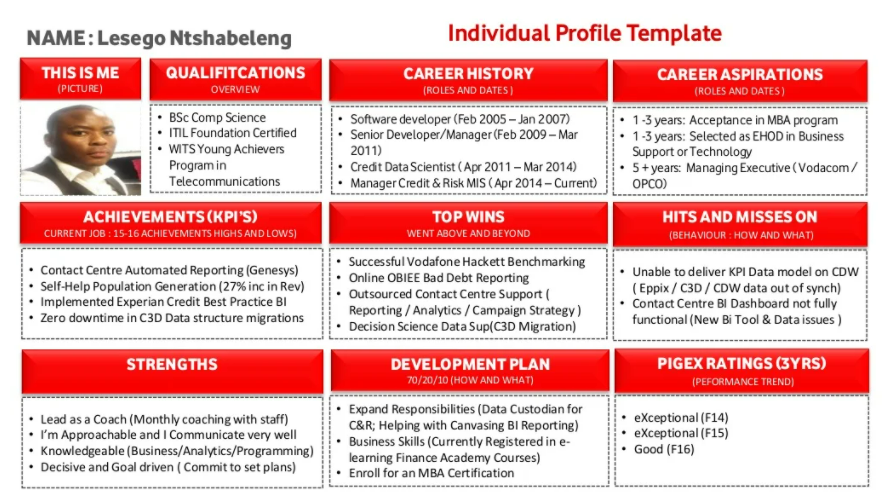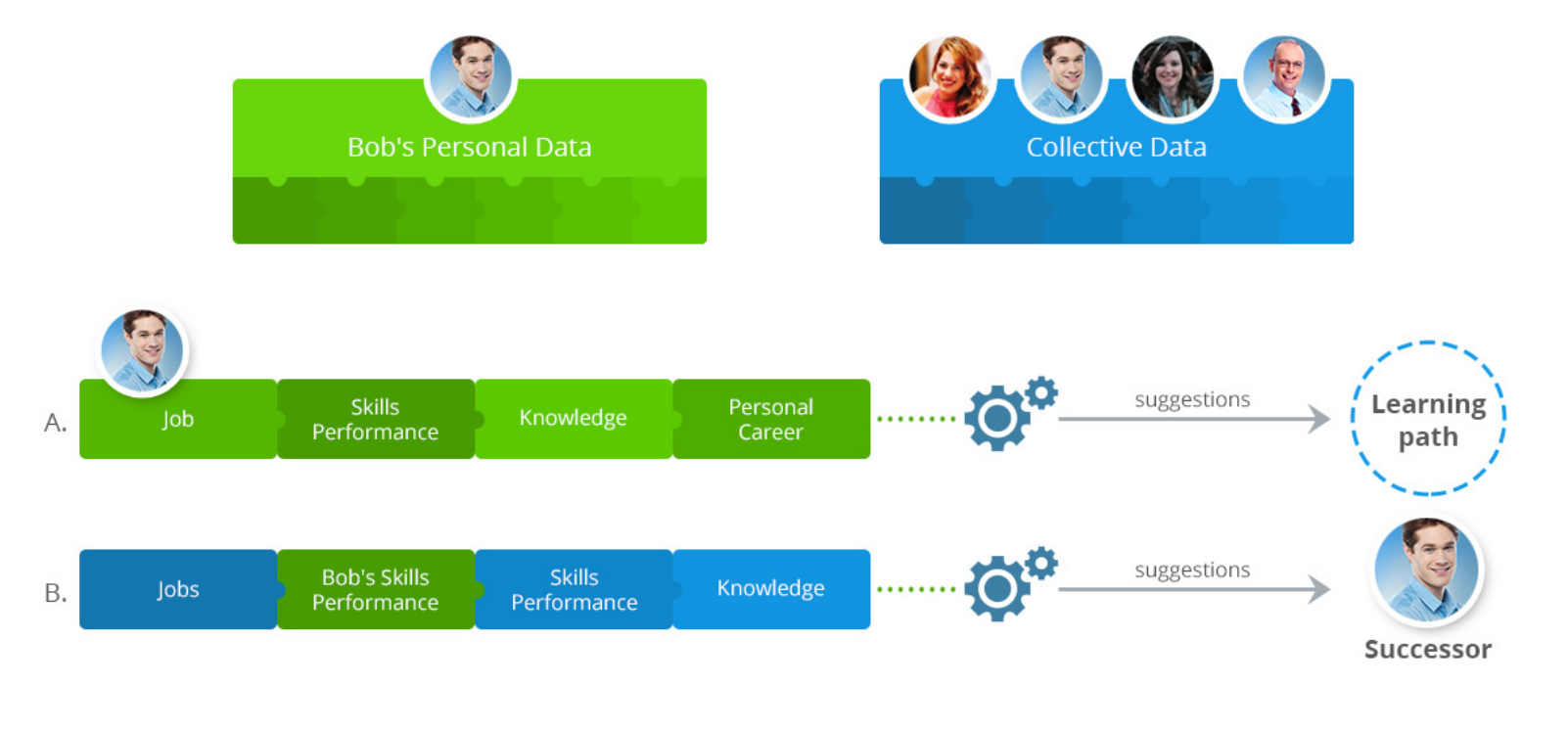Creating an upskilling strategy without looking at employee data is like an accountant making a profit and loss statement without reading the journal entries—impractical in approach, inaccurate on paper.
In today's data-driven age, L&D leaders need to start their talent upskilling journey by looking at employee data—as opposed to treating data as an afterthought. Before we jump into the specifics, let's look at why organizations need to start building an employee-centric talent strategy. As per recent research:
- Around 58% of the existing workforce needs new skill sets to do their jobs
- An overwhelming 83% of industry association economists claim that employers in their sectors are finding it more difficult to fill jobs than they were five years ago
Clearly, upskilling and using data effectively can make or break an organization's HR (and Learning and Development) game. Need guidance in choosing the best upskilling software for your organization? Here you go; Top 12 Best Upskilling Platforms to Upskill your Workforce.
Furthermore, in this blog, we will explore how.
Why Data is the Building Block for an Effective L&D Strategy
First, let's understand why looking at data is essential to creating an upskilling strategy. More and more L&D practitioners are realizing the importance of leveraging real-time data analytics to identify and fill the skills gaps.
Here are the top 6 benefits of using data to drive upskilling decisions.
A data-driven talent strategy helps organizations
1. Hire for the right skills: Skill and talent-related data empowers enterprises to:
- Understand the skills gaps within the marketplace and the enterprise
- Gauge how these changes are impacting the business
- Drive a more proactive approach to positioning key talent
According to research by Gartner, "58% of heads of recruiting have difficulty acquiring talent to maintain current business activities." Furthermore, 64% of them struggle with acquiring talent to support a change in strategy. The right data can throw light on the current talent needs and help map it to the organization's requirements. It can help identify who to hire and where to find them.
Use-Case: How Skill Data is the Lifeblood of Agile Learning at Whirlpool
The challenge: To fill the ever-widening skills gap within the Manufacturing industry
The solution: The brand conducted a pilot test with the aim of capturing skills data from a talent pool of 300 workers, 70 managers, and 50 subject matter experts in research and development roles. Using this skills data, the brand was able to:
- Drive a new approach to agile talent development
- Determine the purpose of the Whirlpool learning experience
- Provide people with the training opportunities they need to master skills required for current roles
- Boost employee engagement by sharing knowledge and learnings from each other's experience
- Initiate open and honest career conversations
- Encourage personal learning goals and drive tailor-made, actionable plans for achieving said goals
- Create customized plans and pathways for specific skill sets
- Boost productivity, innovation, and growth due to on-point upskilling
The result: The L&D leaders and employees benefited from customized personal development plans and up-to-date, emerging R&D learning targets.
2. Drive actionable decisions related to upskilling: With new technologies, the skills and roles are evolving, and so are business models. There's a greater need to educate a business on the kind of talent it requires and uses actionable data to drive informed talent-related decision-making, positioning the enterprise for success. This is where recruitment data can assist organizations in devising an accurate upskilling or reskilling plan.
3. Access high-quality talent: Data can help attract, retain, and engage top talent. As the employees' fit' well into the job, the organization benefits from increased employee work satisfaction, ultimately serving as a competitive advantage for businesses.
4. Build a talent-centric culture: Recruitment data, analyzed over time, can establish talent best practices and help foster a culture of quality recruiting—one that encourages personal and professional employee growth while keeping the organizations' best interests at heart.
5. Create a solid talent pipeline: Data can help HR professionals build a robust talent pipeline and prime future leaders, offering a strategic edge through proactive succession planning.
6. Drive improved performance: Talent-related data can help organizations upskill employees effectively and improve operational performance through actionable strategies.
The lesson: Think of data as the linchpin for making informed and intuitive HR as well as Learning and Development decisions. A data-driven talent strategy can compel organizations to act on the needs of the current talent gaps and pivot as needed, which includes upskilling and reskilling as the situation demands.
Top 6 Upskilling Strategies With Talent Data Acting as the Backbone
To successfully accomplish the dynamic ambitions of an organization, the responsibility rests on how well the HR and L&D teams are able to identify and retain the right talent and upskill/reskill employees as needed.
This is where data can play a big role in optimizing the talent strategy and shaping it to accommodate the current talent needs as well as futuristic skill demands.
Here's how you can leverage 'talent intelligence' to inform your recruitment and L&D goals:
1. Use real-time analytics to drive informed talent acquisition.
Enterprises looking to leverage future-focused talent analytics and insights should leverage data and follow an agile recruitment model. This can be done by:
- Driving responsive planning and resourcing by analyzing bottom-up hiring projections and upskilling employees accordingly
- Looking at talent trends specialized by tasks as well as current business needs to create long-term enterprise value
- Leveraging sophisticated predictive talent analytics to identify the kind of talent needed, where to find it, and most importantly, at what cost
2. Use real-time analytics to understand the evolving skills and upskill accordingly.
For organizations to hire the most sought-after talent in emerging skills areas, they need to look at data early on in the talent planning process. By leveraging insights into the evolution of skills needs, enterprises can stay ahead of the curve.
Use Case: How Enterprises can fill the Skills and Talent Gap with Data-driven Insights
According to Gartner, the automation of data reporting is leading to greater demand for actuaries who can also offer more emerging skills such as technical and data-centric skills.
As per Gartner's TalentNeuron research, New York offers the largest talent pool for actuaries with more than three years of experience. That said, only one in three of said actuaries is equipped with the emerging skills that will be required as their role evolves.
By contrast, in Chicago, the overall talent pool is far smaller, but two out of three actuaries are equipped with emerging skills. These kinds of data insights can help organizations find the right talent from the right location and upskill them as needed.
3. Use real-time analytics to create a more global yet granular upskilling program.
Reviewing data related to the immediate talent needs is just one part of a 360-degree talent strategy. The other segments of a holistic talent plan include analyzing deep-skills needs, understanding the talent demand within the marketplace, and gleaning competition-related talent data.
It should also include insights related to the key operational metrics, such as time-to-fill and cost-per-hire data. By approaching your upskilling strategies from a more holistic perspective, you can upskill/reskill employees with greater accuracy and efficiency.
Use-Case: How FICO Leveraged Skills Data to Upskill for the Future
One of the biggest advantages of looking at skills data is the fact that it is measurable. L&D leaders at FICO understood this well.
The problem: Measuring learning effectiveness and tying it directly to the business outcomes is challenging as learning data is not specific—it often becomes a study of time and motion.
The solution: To leverage scalable and contextual skills data that stem from core business strategies. According to Chrissy Chamberlain, Sr. Director of Digital Learning: "Skills are measurable. You can put a scale to it. You can wrap context around it. You can track an upskilling development journey from novice to intermediate to expert, and learning then becomes a supported activity within that journey. Because of this, skill development becomes a purpose of learning, and measuring skill movement over time becomes a critical metric to agile talent development and employee engagement strategies."
The result: By taking the skills data approach, the brand could:
- Drive a targeted and collaborative upskilling program in consultation with leaders on emerging business priorities
- Create skill plans that guide upskilling initiatives and offer customized development plans based on the baseline as well as target skill ratings for unique roles.
- Analyze skill movement over a period of time and extract actionable insights such as: "We've accomplished a [X] % increase in our capacity to do Y."
4. Use real-time analytics to turn raw data into actionable insights for upskilling.
In today's digital, data-driven age, personality analysis is no longer an accurate indicator of 'employee fit' within an organization. And when it comes to selecting the right employee for upskilling/reskilling, even manager recommendations and employee performance fall short. This is where Big Data and tech innovation can come to the rescue. It can empower L&D professionals to build an in-depth talent profile, one that includes:
- Job and salary history
- Employee goals and achievements
- Leadership potential
- Performance reviews
- Department-wide recognition
- Learning-module completion
- Advanced certifications
- Employee competency levels, current skills, and learning capacity
Here's an excellent example of a comprehensive and data-intensive talent profile:

Use Case: How Novo Nordisk, a Denmark-based Pharmaceutical Company used Skills Data to Support Agile Talent Development
The challenge: Ensuring that the employees are always engaged and at the forefront of what they do
The solution: The company's L&D leaders pay special attention to the skill data to understand:
- Whether employees have certain prerequisite skills (like digital literacy and sustainability) or whether they need to upskill within a particular category
- Align its talent base's strengths and weaknesses with the company's objectives
- Gauge the employee's 'broader' interests, which may pan out to additional roles or skills needed elsewhere within the business
The result: This data-centric approach empowered the organization to tap the latest talent in key areas such as data science, psychology, business development, etc. It also helped employees rate their current skills in addition to understanding which skills they'd like to learn. Moreover, L&D managers can parse this information with HR data to identify employee strengths and weaknesses and build a niche cohort of future-ready talent.
The need of the hour is to integrate the employee data with statistical data that comes from HCM tools, for instance. These data-centric tools can help understand where the employees are currently, assist L&D leaders in reading and understanding that data, and put it in an actionable format for establishing upskilling development programs.
Elevate your talent strategy with iMocha’s AI Upskilling and Reskilling—detecting skill gaps, enabling role-specific training, and fostering workforce agility.
5. Use real-time analytics to engage and upskill talent strategically.
Upskilling employees requires constant monitoring and can improve the quality of the L&D program as well. For example, it can demonstrate whether:
- The training is effective or not
- Employees are falling below a specific benchmark with respect to the learning curve
- There are new opportunities for training
- Key challenges while upskilling employees
A great example of an eLearning tool that offers specialized training and career development courses is Schoox:

This type of tool helps:
- Hone the skills of future leaders
- Develop high-potential employees strategically
- Rank employees on their skills and acquired strengths
- Empowers leaders with data-based insights, ultimately informing talent decisions
Talent data also helps keep the employees motivated as organizations take the bull by the horns and initiate training programs before the employees' interests wane off. This is a winning strategy for enterprises wanting to retain quality talent.
Other advantages of a data-driven talent strategy include:
- Creating a specialized learning path, which includes in-demand certifications and courses across departments and divisions
- Offering unlimited learning opportunities for high-potential employees
- Driving continuous skill development and growth
- Keeping a pulse on where the employee is in their learning journey and how they're faring in the upskilling programs via features such as sentiment analysis and cognitive assessments
- Driving assessments related to hiring, leadership development, succession planning, and upskilling
- Assisting existing employees in learning new in-demand skills and roles for which there's a glaring gap (think: machine learning, for instance)
To know about the essential components of a Successful Learning and Development Strategy, visit here.
6. Use real-time analytics to drive a personalized upskilling strategy.
Talent data and analytics can also enable organizations to pave the way for a personalized upskilling and learning strategy. It can help gather knowledge about the employee's motivations, goals, fears, challenges, etc. and empower L&D leaders to curate tailor-made upskilling programs.
This type of customized route can also create faster feedback loops and provide insights into what's working for the learners (and what's not). This will ultimately help assess the program's efficacy and produce optimized outcomes for the business.
The Takeaway
An analytics-driven talent strategy can empower organizations to prep for the workforce of the future. There's a raging need for HR leaders to leverage data and technology to drive strategic decision-making and get buy-in at the executive table.
This will not only help the enterprise get its hands on top-notch talent but will also help build a forward-thinking, data-driven recruiting strategy.


